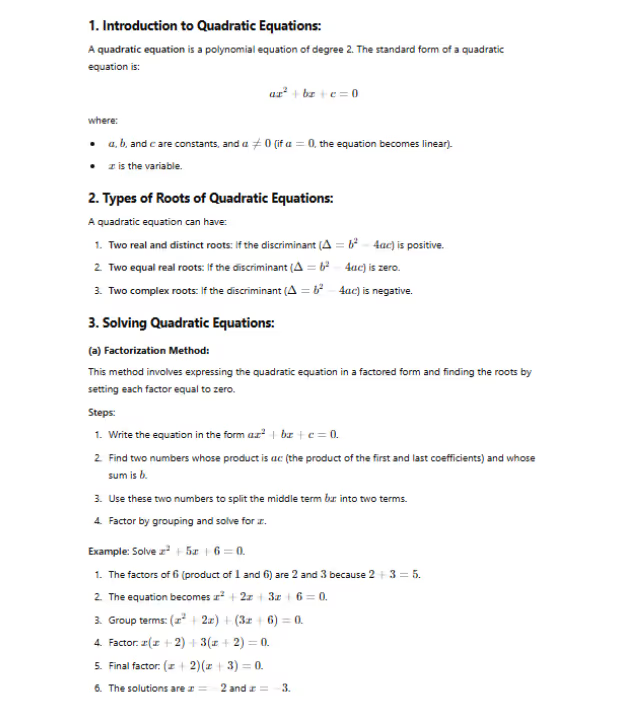Strengthen your preparation for the CBSE Class 10 Board Exams with this guide on CBSE Class 10 Mathematics Chapter 4 Important Questions - Quadratic Equations. Explore key concepts like physical and chemical properties, reactivity series, and practical applications to excel in exams confidently.
Here are 50 important questions on Cbse Class 10 Mathematics Chapter 4 Important Questions - Quadratic Equations
These questions cover various aspects of metals and non-metals, including their properties, reactions, uses, and applications as presented in the document provided, ensuring comprehensive coverage of key topics within this chapter on Metals and Non-Metals.
The chapter “Quadratic Equations” in Class 10 Science explores the fundamental properties, reactivity, and applications of Quadratic Equations. Below is a detailed explanation of the key topics covered in this chapter based on class 10 maths syllabus:

.avif)
In Metals and Non-Metals, students learn to distinguish between the physical and chemical properties of metals and non-metals, along with their reactivity series.
Mastering these concepts is essential for tackling questions in the CBSE Class 10 Board Exams.
Focusing on CBSE Class 10 Science Chapter 3 Important Questions - Metals and Non-Metals and reviewing related sample papers will enhance understanding and exam performance. Consistent revision and well-organized notes are key to acing this chapter.
Chapter 1 Chemical Reactions And Equations
Chapter 2 Acids, Bases, And Salts
Chapter 3 Metals And Non-Metals
Chapter 4 Carbon and its compounds
Chapter 6 Control And Coordination
Chapter 7 How Do Organisms Reproduce?
Chapter 8 Heredity And Evolution
Chapter 9 Light – Reflection And Refraction
Chapter 10 The Human Eye And The Colourful World
Chapter 12 Magnetic Effects Of Electric Current
Also Refer:
Below are some of the frequently asked question on the topic Quadratic Equations class 10 mathematics:

The standard form of a quadratic equation is ax² + bx + c = 0 where a not equal to 0.

The quadratic formula is: x = -b±√b²-4ac / 2a It is used to solve quadratic equations when factorization is not possible.

The nature of the roots is determined by the discriminant (Delta = b² - 4ac) ; Delta > 0 means two real and distinct roots. means one real root (repeated). Delta = 0 Delta < 0 means two complex roots.

If the discriminant (Delta = 0) the quadratic equation has exactly one real root (a repeated root).

Quadratic equations are used in various real-life scenarios such as calculating the trajectory of objects, maximizing profit, finding the area of geometric shapes, or solving problems involving speed, distance, and time.